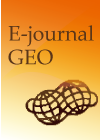Volume 17, Issue 2
Displaying 1-16 of 16 articles from this issue
- |<
- <
- 1
- >
- >|
-
2022Volume 17Issue 2 Pages 180-196
Published: 2022
Released on J-STAGE: July 01, 2022
Download PDF (1596K) -
2022Volume 17Issue 2 Pages 197-209
Published: 2022
Released on J-STAGE: July 09, 2022
Download PDF (1871K) -
2022Volume 17Issue 2 Pages 210-229
Published: 2022
Released on J-STAGE: July 15, 2022
Download PDF (1956K) -
2022Volume 17Issue 2 Pages 230-248
Published: 2022
Released on J-STAGE: July 28, 2022
Download PDF (5915K) -
2022Volume 17Issue 2 Pages 249-264
Published: 2022
Released on J-STAGE: August 06, 2022
Download PDF (4885K) -
2022Volume 17Issue 2 Pages 265-285
Published: 2022
Released on J-STAGE: August 06, 2022
Download PDF (23964K) -
2022Volume 17Issue 2 Pages 286-302
Published: 2022
Released on J-STAGE: August 06, 2022
Download PDF (2054K) -
2022Volume 17Issue 2 Pages 303-318
Published: 2022
Released on J-STAGE: August 06, 2022
Download PDF (3785K) -
2022Volume 17Issue 2 Pages 319-337
Published: 2022
Released on J-STAGE: September 17, 2022
Download PDF (2058K) -
2022Volume 17Issue 2 Pages 338-349
Published: 2022
Released on J-STAGE: October 07, 2022
Download PDF (989K) -
2022Volume 17Issue 2 Pages 350-362
Published: 2022
Released on J-STAGE: October 25, 2022
Download PDF (3524K)
-
2022Volume 17Issue 2 Pages 363-364
Published: 2022
Released on J-STAGE: November 02, 2022
Download PDF (288K) -
2022Volume 17Issue 2 Pages 365-366
Published: 2022
Released on J-STAGE: November 02, 2022
Download PDF (255K) -
2022Volume 17Issue 2 Pages 367-368
Published: 2022
Released on J-STAGE: November 02, 2022
Download PDF (296K)
-
2022Volume 17Issue 2 Pages 369-383
Published: 2022
Released on J-STAGE: November 25, 2022
Download PDF (4053K)
-
2022Volume 17Issue 2 Pages E01
Published: 2022
Released on J-STAGE: November 25, 2022
Download PDF (83K)
- |<
- <
- 1
- >
- >|
